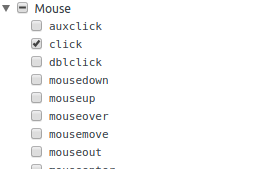Mr Robot - vulnhub write up
After getting this fired up virtualbox, the first thing I did and like to do is run an nmap scan.
Huh, only http(s) ports open.
When first visiting the site, I found this in the index source code
`USER_IP='208.185.115.6'`
I was hungup on this for quite a while. I kept thinking I could get more access if my ip address matched this but I finally moved on.
Next up, robots.txt
key 1 of 3
073403c8a58a1f80d943455fb30724b9
The first key, sweet! And a dictionary, the first thing I thought to do with this was to use it with dirb to find some secret directories/files. It found some things, like a zip file 'robot' which contained part of the site but it was called 'robot.com'. Based on that I updated my hosts file but it didn't make any difference.
After some time puzzling about this, I decided to try it in a dictionary attack (using the fsociety.dic) against 'wp-login.php' but what is the username? elliot! Damn! That was pretty simple actually. Finally bumped into the password in there but it was towards the end.
Now that I'm into wordpress, I went straight for the theme editor. I chose to modify the '404.php' file in this case. I removed its current code and placed in a reverse shell from pentestmonkey and with that I have access to the box and I'm in as the user 'daemon'. Not the greatest but I have access, now I had a look at the other users
In particular the password file, but it's md5 encoded. In no time at all I have the password for the robot user and the 2nd key
Now I need to make my way to the root user. I can't use the same password to get there (sudo su) so I need to look for something else. There's nothing else really laying around that looks like it could be helpful. I thought let me look for files with the setuid set for root
There were some interesting looking files that popped up here and after some quick googling I was able to find an exploit for nmap. Let me see if it works...
followed by
Sweet! Let me grab the last key...
And I'm done here.
Huh, only http(s) ports open.
PORT STATE SERVICE VERSION 22/tcp closed ssh 80/tcp open http Apache httpd 443/tcp open ssl/http Apache httpd
When first visiting the site, I found this in the index source code
`USER_IP='208.185.115.6'`
I was hungup on this for quite a while. I kept thinking I could get more access if my ip address matched this but I finally moved on.
Next up, robots.txt
User-agent: * fsocity.dic key-1-of-3.txt
key 1 of 3
073403c8a58a1f80d943455fb30724b9
The first key, sweet! And a dictionary, the first thing I thought to do with this was to use it with dirb to find some secret directories/files. It found some things, like a zip file 'robot' which contained part of the site but it was called 'robot.com'. Based on that I updated my hosts file but it didn't make any difference.
After some time puzzling about this, I decided to try it in a dictionary attack (using the fsociety.dic) against 'wp-login.php' but what is the username? elliot! Damn! That was pretty simple actually. Finally bumped into the password in there but it was towards the end.
Now that I'm into wordpress, I went straight for the theme editor. I chose to modify the '404.php' file in this case. I removed its current code and placed in a reverse shell from pentestmonkey and with that I have access to the box and I'm in as the user 'daemon'. Not the greatest but I have access, now I had a look at the other users
cat /etc/passwd. After that I browsed the home directory and found that there's some interesting looking files in the 'robot' users home directory.In particular the password file, but it's md5 encoded. In no time at all I have the password for the robot user and the 2nd key
key 2 822c73956184f694993bede3eb39f959
Now I need to make my way to the root user. I can't use the same password to get there (sudo su) so I need to look for something else. There's nothing else really laying around that looks like it could be helpful. I thought let me look for files with the setuid set for root
find / -perm +4000
There were some interesting looking files that popped up here and after some quick googling I was able to find an exploit for nmap. Let me see if it works...
nmap --interactive
followed by
! sh gives me root access.Sweet! Let me grab the last key...
key 3 04787ddef27c3dee1ee161b21670b4e4
And I'm done here.
Labels: CTF
















